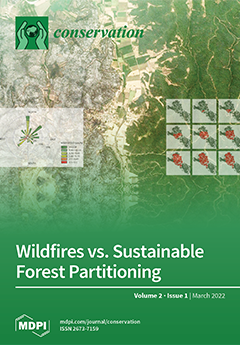Open AccessArticle
How Policy and Development Agencies Led to the Degradation of Indigenous Resources, Institutions, and Social-Ecological Systems in Nepal: Some Insights and Opinions
by
Bhubaneswor Dhakal, Narendra Chand, Anita Shrestha, Nischal Dhakal, Krishna Bahadur Karki, Him Lal Shrestha, Padam Lal Bhandari, Bikash Adhikari, Shyam Krishna Shrestha, Sudarshan Prasad Regmi and Rishi Ram Kattel
Cited by 3 | Viewed by 4204
Abstract
Rapid growth of environmental problems, economic volatilities, and social changes have increased the scopes of adopting environmentally friendly and resilient production systems. Regenerative farming and forestry practices are such systems appropriate for mountain communities in Nepal. They had performed better with indigenous resources,
[...] Read more.
Rapid growth of environmental problems, economic volatilities, and social changes have increased the scopes of adopting environmentally friendly and resilient production systems. Regenerative farming and forestry practices are such systems appropriate for mountain communities in Nepal. They had performed better with indigenous resources, institutions, and social-ecological systems. Unfortunately, the assets have been degraded to extinction, mainly commencing works of national and international development agencies. Consequently, regenerative practices are disappearing. Despite appeals and commitments, the degradations of the assets are not halted and reversed. This study used secondary sources of data and work experiences and explained the working faults of the external agencies involved in the agriculture, forestry, and wildlife sectors. It elucidated that most regenerative practices had sustained well in forest and farm resource-integrated production systems and a modest degree of natural and human inputs and production environments. The production environments degraded when the government agencies provided foreign agencies opportunities to be involved actively in policy formulation and implementation of agriculture and forestry-related sectors. The foreign agencies meddled in the national policies and community practices and modified the production environments for their interests and benefits. They intervened in policies and local communities to practice a farming system based on extremely human-made and imported inputs and institutions and to manage forest-related resources in extremely intact natural systems. In the policy discourses and decisions, the farming inputs, practices, and institutions popularly practiced in developed countries are considered superior whereas the indigenous ones are considered inferior. Agricultural plans and policies have overvalued flash yield or other direct returned and undervalued environmental friendliness, indirect economic benefits, and social advantages to prioritize support of the government and other agencies. The introduced farming inputs and institutions displaced or hampered the indigenous ones. The foreign agencies also meddled in forest policies and practices of the country to address environmental and economic problems of developed countries which resulted in adverse impacts on the indigenous assets. They intervened in the resource management policies with financial and technical inputs to destroy some of the assets and make the forest-related resource management that results in better benefits (offsetting GHG emission, enhancing tranquility and serenity of recreational sites, and potentially expanding agricultural markets) to the people of developed countries. This study has explained how the officials and experts of both government and foreign agencies abused and misused some strategic tactics and overused, poorly used and disused, others in their work process to address their self-centered interests and problems. In essence, intentional destructive interventions of the policy and development agencies have resulted in degradation to the extinction of the indigenous assets in the communities.
Full article
►▼
Show Figures




